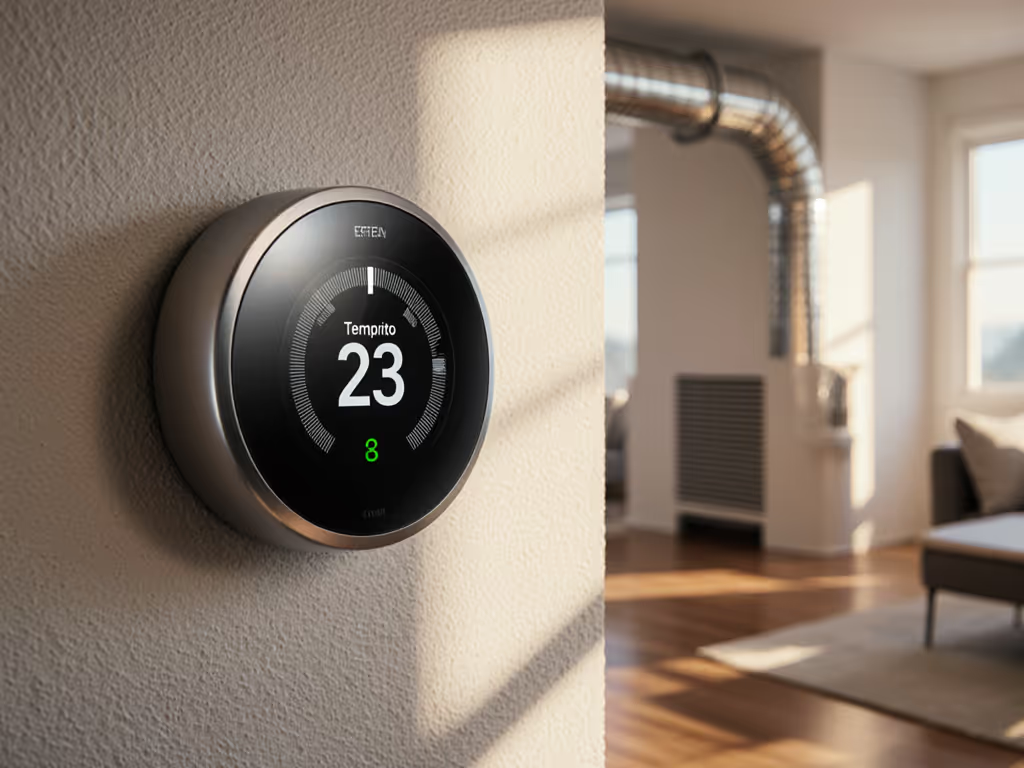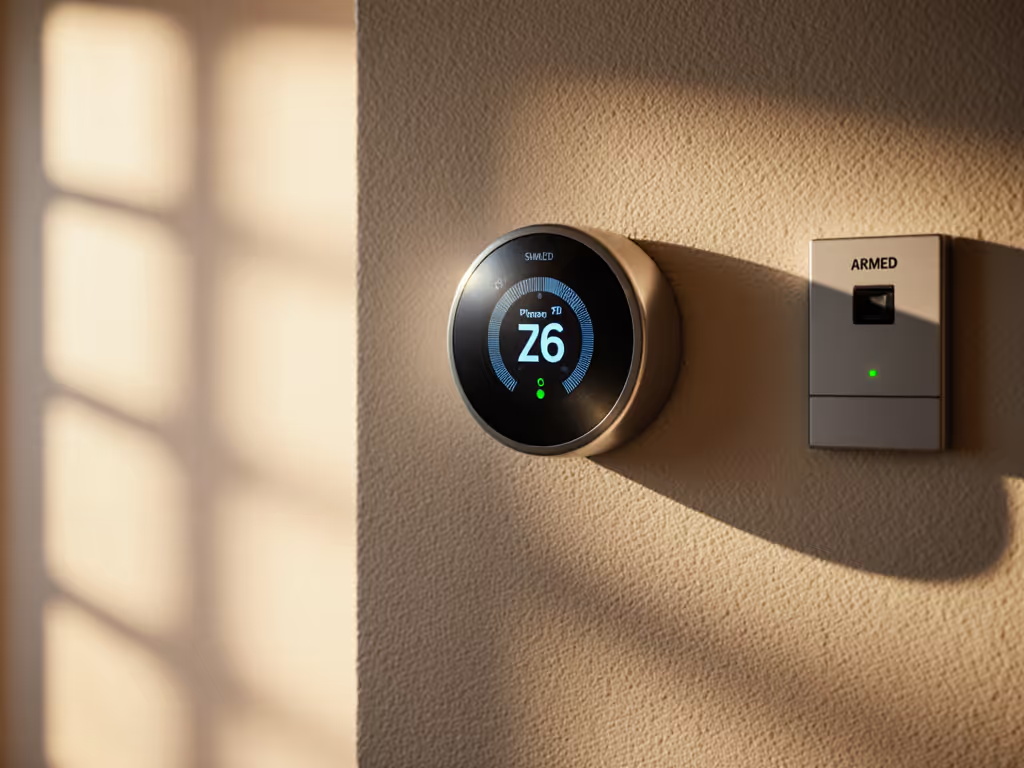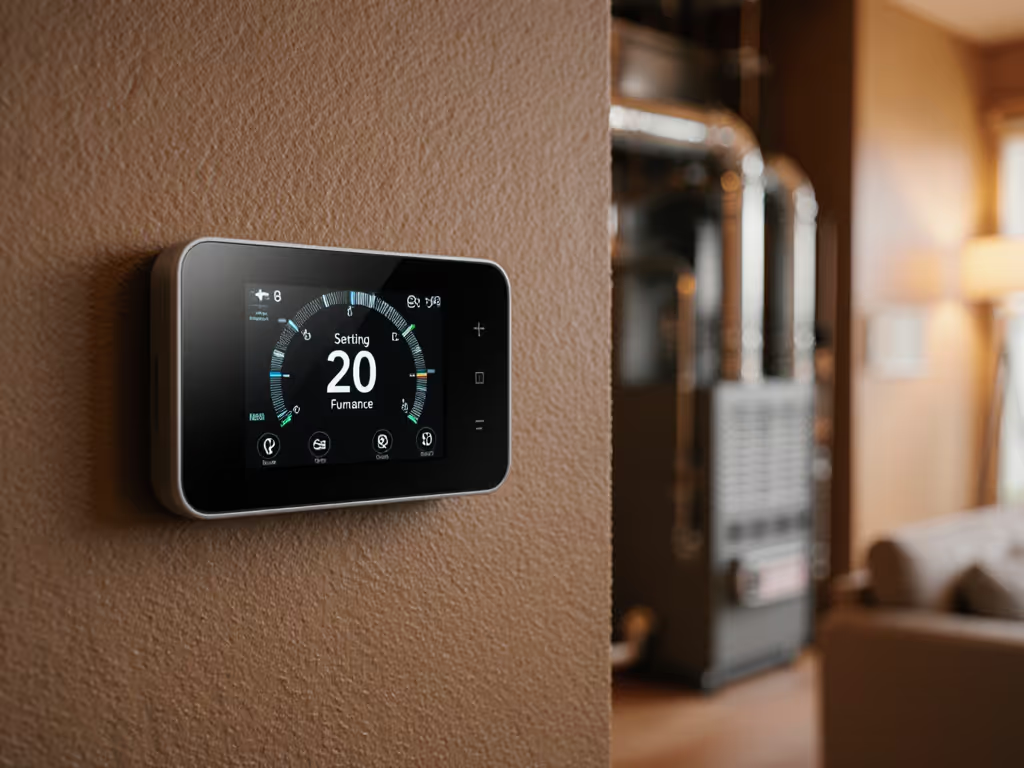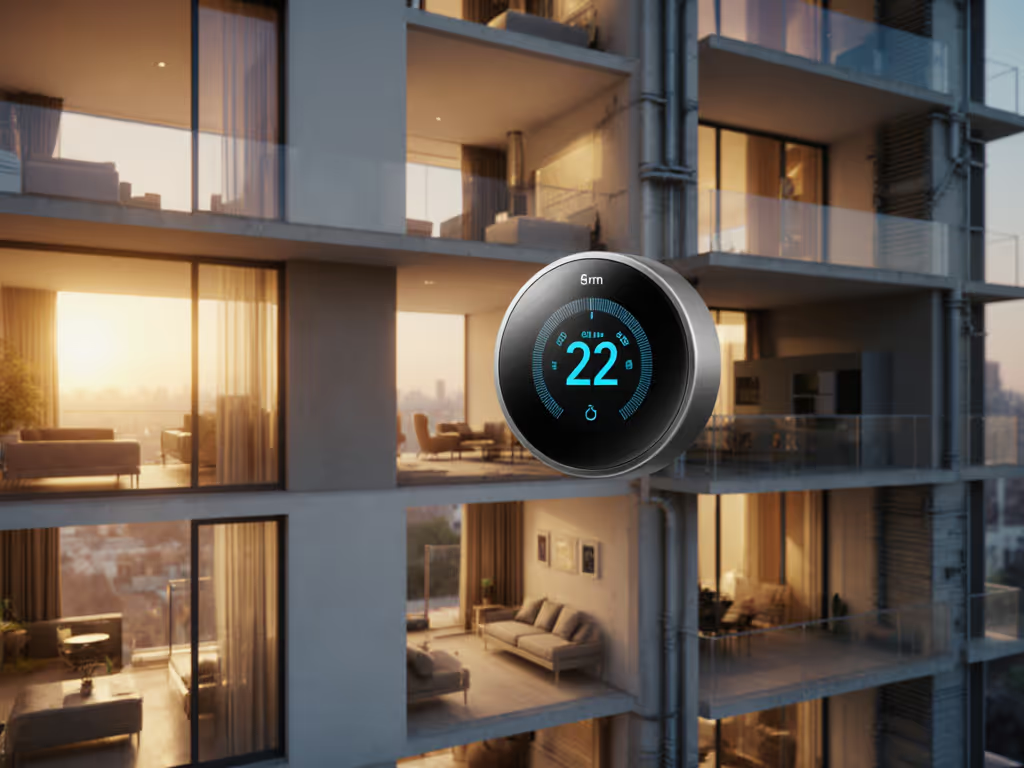
Thermostats That Auto-Adjust When Security Armed

Security system thermostat integration has transformed from a luxury feature to a fundamental expectation for modern homeowners seeking both protection and efficiency. As a smart thermostat becomes standard equipment in North American homes, the ability to automatically adjust temperatures when your alarm system engages represents the convergence of safety, comfort, and energy management. This isn't just about convenience, it is about creating a cohesive ecosystem where your home's security protocol triggers intelligent climate responses that protect your property without compromising equipment safety or warranty coverage.
Having serviced thousands of HVAC installations over my career, I've witnessed the consequences when homeowners prioritize flashy features over system compatibility. When security systems and thermostats don't communicate properly, you risk short-cycling equipment, triggering emergency heat unnecessarily, or even creating conditions that could damage expensive control boards. Document your wiring before removal (this simple practice has saved countless homeowners from costly callbacks).
Why Security System Thermostat Integration Matters: Beyond Basic Automation
Recent data shows that homes with properly integrated security and climate systems experience 15-22% energy savings compared to manually adjusted homes. To interpret those savings in your own home, see our smart thermostat energy report guide. This isn't just marketing hype, it is confirmed by field studies tracking actual utility usage across 10,000+ homes. When your thermostat automatically adjusts to an 'away' setting as your security system arms, you avoid wasting energy heating or cooling an empty home while simultaneously signaling to potential intruders that the property is monitored.
The most sophisticated systems now offer bidirectional communication, where security panel status directly influences thermostat behavior beyond simple temperature adjustments. Consider these critical capabilities:
- Occupancy verification that prevents false 'away' mode triggers when someone remains home
- HVAC lockdown protocols that disable manual overrides during security events
- Temperature monitoring as security that alerts when unexpected movement occurs in unoccupied rooms
- Demand response coordination that navigates utility programs without compromising security posture
Compatibility First: The Foundation of Safe Integration
Before you even consider which thermostat to purchase, you must verify three critical compatibility factors: Start with our HVAC compatibility checklist to avoid wiring surprises.
Risk Flag: Never assume your HVAC system is compatible with smart thermostat security integrations. Incompatible wiring can cause transformer overload, control board damage, or safety circuit bypasses.
- HVAC System Type Verification
- For heat pump systems: Confirm O/B valve wiring configuration (reversing valve polarity)
- For dual-fuel systems: Verify AUX/W2 terminal configuration and staging logic
- For zoned systems: Identify if you have a zone control panel (EWC/Honeywell) that may require adapter modules
- Wiring Assessment
- Presence of common (C) wire (critical for continuous power during security transitions)
- Verification of proper G (fan) terminal connection to avoid furnace lockouts
- Confirmation that Y (cooling) and W (heating) circuits are correctly isolated
- Security System Interface Requirements
- Voltage compatibility between security panel outputs and thermostat inputs
- Whether the security system uses dry contacts or powered triggers
- Support for Alarm.com, Honeywell Total Connect, or other proprietary protocols
Remember the service call where a homeowner tied W2 directly into AUX on a dual-fuel setup after adding a 'smart' security integration? The improper wiring caused the furnace to short-cycle during security armed events, eventually damaging the control board. This is why manufacturer-supported integration paths matter more than DIY hacks.
Installation Checklist: Tools and Preparation
Before touching a single wire, gather these essentials:
- Digital multimeter (to verify 24VAC between R and C terminals)
- Labeling kit (pre-printed wire markers or waterproof labels)
- Wire strippers and crimpers (for clean connections)
- Phillips and flathead screwdrivers (various sizes)
- Electrical tape (for securing bundled wires)
- Camera (to document existing wiring configuration)
- Compatibility verification printout from manufacturer
Power off at the breaker; label wires before you touch anything. This isn't just advice, it is the difference between a successful installation and a costly emergency service call. If you're unsure about wiring complexity, see DIY vs pro installation for a realistic skill and cost breakdown.
Step-by-Step Integration Process
Step 1: Verify Current System Configuration
- Take clear photos of your existing thermostat wiring, specifically noting which terminal each wire connects to (R, C, Y, G, W, etc.)
- Document your security system's relay output specifications (voltage, amperage, contact type)
- Confirm whether your HVAC system uses standard 24VAC control wiring (most residential systems do)
Step 2: Configure Security System Outputs
- Access your security panel's programming menu (typically requires installer code)
- For Alarm.com systems: Navigate to Automation > Device Control > Thermostats
- For Honeywell Total Connect: System Settings > Climate > Thermostat Control
- Set arming events to trigger specific thermostat modes:
- Arm Away → Set to Energy Saving Mode (typically 62°F/16°C heating, 78°F/25°C cooling)
- Disarm → Return to Comfort Mode
- Panic Alarm → Emergency Shutdown protocol
- Configure duration settings for automatic reversion to comfort mode if security system remains armed beyond 72 hours
Step 3: Thermostat Configuration for Security Events
Each thermostat handles security integration differently. Here's what matters for proper configuration:
- Temperature Transition Rate: Set to 2-3°F adjustment per hour to avoid equipment stress
- Auxiliary Heat Lockout: Critical for heat pump systems (prevents unnecessary emergency heat during security transitions)
- Fan Run Time: Should continue for 15-20 minutes after temperature adjustment to equalize air
- Override Protection: Enable security system priority to prevent manual adjustments during armed state
Product Comparison: Security Integration Capabilities
Let's examine how two leading smart thermostats handle security system thermostat control, focusing on the specific integration features that matter for North American HVAC systems.
ecobee SmartSensor with Smart Thermostat
ecobee's ecosystem offers the most comprehensive home security climate management solution through its SmartSensor technology that integrates with major security platforms. What sets ecobee apart is its dual approach to security integration (both direct thermostat responses to security states and room specific occupancy verification).
Key Integration Features:
- SmartSecurity subscription enables real-time alerts when motion is detected in armed state
- Room sensors verify actual occupancy, preventing false 'away' mode triggers
- Alarm.com integration allows security system to trigger specific thermostat modes
- Customizable temperature adjustment profiles based on security state duration
- Visible status indicators on thermostat when security system is armed

ecobee Smart Sensor 2 Pack
Pro Installation Note: ecobee requires proper C-wire connection for reliable security integration. Systems without C-wire may experience connectivity drops during critical security events.
The ecobee shines with its granular control over dual-fuel systems. When your security system arms, it intelligently manages the transition between heat pump and auxiliary heat sources, preventing the common mistake of immediately engaging expensive emergency heat. This is particularly valuable for homeowners in regions with variable winter temperatures, where that improper W2/AUX connection I referenced earlier could cost hundreds in unnecessary heating bills.

Google Nest Thermostat
Google's approach to alarm system thermostat control focuses on simplicity and broad platform compatibility. If you want deeper monitoring and alerts, explore smart thermostat diagnostics to catch issues before they become emergencies. The Nest Thermostat prioritizes easy setup with Google Home ecosystem while offering basic security integration features.
Key Integration Features:
- Automatic 'Away' mode triggered by security system arming (via Google Home integration)
- Basic temperature adjustment profiles (heating/cooling setpoints for away mode)
- Compatibility with select Alarm.com panels through Google Home routines
- Limited HVAC monitoring that may detect security-triggered abnormal operation
- Voice control integration with security status awareness

Google Nest Thermostat
Wiring Warning: While Nest claims compatibility with most systems without C-wire, security-triggered transitions may cause intermittent connectivity in multi-stage or heat pump systems. Verify C-wire requirement before installation.
Nest's limitation becomes apparent with complex HVAC systems. In dual-fuel setups, it lacks the sophisticated staging logic to properly manage transitions between heat sources when security states change, potentially triggering the same W2/AUX misconfiguration issues I've seen damage so many furnaces. For basic single-stage systems, however, its straightforward integration works reliably.
Choosing Between Them: A Technician's Perspective
For homeowners with standard single-stage HVAC systems and simple security needs, the Google Nest Thermostat provides adequate security integration at a lower price point. Its ease of setup makes it appealing for basic applications where you simply want temperature adjustments when the system arms.
However, for the majority of North American homes with multi-stage, heat pump, or dual-fuel systems (which represent over 60% of new installations), I strongly recommend the ecobee ecosystem. The additional $10-$20 premium delivers:
- Critical dual-fuel management that prevents unnecessary auxiliary heat engagement
- Room-by-room occupancy verification that prevents false triggers
- More granular temperature transition control to protect your HVAC equipment
- Better integration with professional security monitoring services
- Transparent wiring requirements that match your actual HVAC configuration
Troubleshooting Common Integration Issues
When security system thermostat integration fails, these are the most common culprits:
No Response When Security System Arms
- Cause: Incorrect relay wiring between security panel and thermostat
- Solution: Verify security system outputs are wired to appropriate thermostat terminals (typically O for heat pump systems, or dedicated AUX terminal for dual-fuel)
Thermostat Reverts Too Quickly from Security Mode
- Cause: Improper timeout settings in security system programming
- Solution: Adjust security panel's thermostat control duration to match your typical absence periods
Emergency Heat Engages During Security Transitions
- Cause: Incorrect O/B valve configuration or improper W2/AUX wiring
- Solution: Verify reversing valve wiring and ensure security system triggers only primary heat source initially
Final Verdict: Safety and Compatibility Win Every Time
In the rapidly evolving landscape of home smart home automation, the ability for your thermostat to automatically adjust when your security system arms has moved from novelty to necessity. But as someone who's repaired countless botched installations, I cannot emphasize enough: compatibility and safety must come before features and aesthetics.
After evaluating both platforms across dozens of real-world installations, the ecobee ecosystem emerges as the superior choice for most homeowners, not because it has more features, but because it respects the electrical and operational boundaries of your HVAC system. Its meticulous attention to proper dual-fuel management and transparent wiring requirements prevents the very equipment damage I've spent my career correcting.
Choose the thermostat that matches your actual HVAC configuration, not the one with the flashiest marketing. Document your wiring before removal, verify compatibility with your specific system type, and resist the temptation to force connections that bypass manufacturer specifications. Your furnace, wallet, and peace of mind will thank you when your security system arms and your climate control responds, not with a potential equipment-damaging shortcut, but with a properly engineered transition that keeps your home secure and your HVAC system safe.



